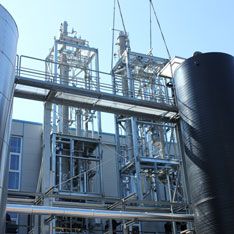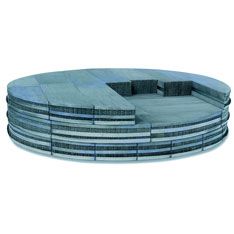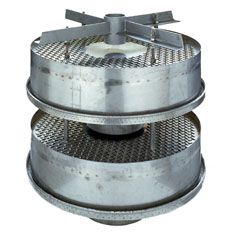Rectification
Rectification or counter current distillation is a process for the thermal fine separation of multicomponent mixtures. In contrast to simple distillation, part of the condensate continually runs counter to the vapour, thus allowing a high material exchange between the gas and the liquid phase.
Advantages of rectification
- high separation efficiency
- lower energy consumption than series-arranged distillations
Absorption
Absorption refers to the absorption of gases and vapours into liquids. A pollutant or reusable material is transferred from the gas phase into the liquid detergent phase and can be isolated in a further process step.
Advantages of absorption
- simple process conditions, usually ambient pressure and ambient temperature
- high gas flow densities and short holding time
- insensitive to concentration fluctuations



